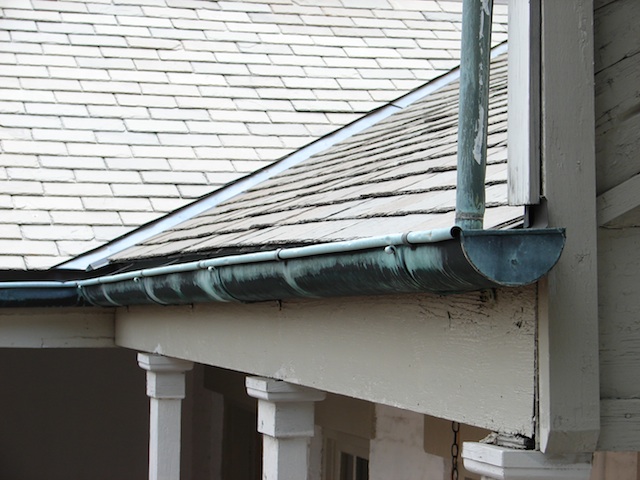DCHP-2
eavestrough eaves-trough, eaves trough; DCHP-2 (October 2016)
n. — usually in the plural, Housing
a trough running along the edge of a roof that collects and drains rain water.
Type: 1. Origin — Eavestrough is virtually unknown outside Canada, and it is 25 times more common in Canadian English than in American English (see Chart 1). The citations in OED-3 (s.v. "eaves" (C1.a)) are all North American, although it is not labelled as such. Boberg (2010: 176) finds that eavestrough is most frequently used in Alberta, Saskatchewan, and Ontario; our internet data confirm his findings (see Chart 2). Gutter is the preferred variant on the coasts (BC and Newfoundland) and in Anglophone Quebec. According to DARE (s.v. "eaves trough"), AmE usage of eavestrough appears chiefly in the dialects of the northern and north midland US, and less often in the west. The earliest US citation is from the 1851 novel Moby Dick by Hermann Melville, see OED-3, s.v. "eaves (C1, Compounds, "eaves-trough").
An older form is eavestroughing, used a as noun, which is quite rare today (but see the 1906 and 1937 quotations).
See also COD-2, s.v. "eavestrough", which is marked "N. Amer. (esp. Cdn)".- This is a nominal compound of eaves 'the part of the roof that stands out beyond the walls' and trough 'container of liquids'. In oral usage, a metonymical change (a part is taken for the whole) occurs occasionally when eavestrough is shortened to eaves.
References:
- Boberg (2010)
- COD-2
- DARE
- OED-3 s.v. "eaves" Accessed 30 Oct. 2014
Images:

Image 1: An eavestrough. Source: Wikimedia Commons. Photo: M. Gstohl
Chart 1: Internet Domain Search, 21 Sep. 2012
Chart 2: Regional Domain Search, 21 Sep. 2012

